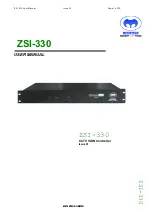
DDR3 SDRAM in Stratix III Devices Design Flow
Page 19
© November 2008
Altera Corporation
AN 436: Using DDR3 SDRAM in Stratix III and Stratix IV Devices
■
If the design cascades PLLs, the source (upstream) PLL should have a
low-bandwidth setting, while the destination (downstream) PLL should have a
high-bandwidth setting
■
In Stratix III devices, two PLLs may be cascaded to each other through the clock
network. In addition, where two PLLs exist adjacent to each other, there is a direct
connection between them that does not require the global clock network. Using
this path reduces clock jitter when cascaded PLLs. Cascaded PLLs are not
recommended for ALTMEMPHY-based designs
1
You can only cascade PLLs between adjacent PLLs on the same side of the
device.
1
If PLLs are cascaded in ALTMEMPHY based designs, you must use the
adjacent PLL (direct connection) method.
■
Input and output delays are only fully compensated for, when the dedicated clock
input pins associated with that specific PLL are used as its clock source
■
If the clock source for the PLL is not a dedicated clock pin for that specific PLL,
jitter is increased, timing margin suffers, and the design may require an additional
global or regional clock
The following additional ALTMEMPHY-specific points apply:
■
ALTMEMPHY megafunctions require one global or regional clock, and five
regional clock nets in Stratix III devices. Hence six clocks in total are required
■
Any PLL on any side of a Stratix III device can support a single ALTMEMPHY
interface. Ideally, you should pick a PLL and a PLL input clock pin that are located
on the same side of the device as the memory interface pins
■
As each PLL can only connect to four global clock nets, while the ALTMEMPHY
megafunction requires six clock nets, an ALTMEMPHY-based design cannot cross
from one side of a Stratix III device to the other side. For example, an
ALTMEMPHY-based design can only exist within a dual regional side of a
Stratix III device
■
If a single ALTMEMPHY interface spans two side quadrants, a middle side PLL
must be the source for that interface. The ten dual region clocks that the single
interface requires block the design using the adjacent PLL (if available) for a
second interface
■
If a single ALTMEMPHY interface spans two top or bottom quadrants, a middle
top or bottom PLL must be the source for that interface. The ten dual region clocks
that the single interface require should not block the design using the adjacent PLL
(if available) for a second interface
f
For more information on clock networks, refer to
Clock Networks and PLLs in Stratix III
Stratix III Device Handbook
.
f
For more information on multiple memory controllers, refer to
















































